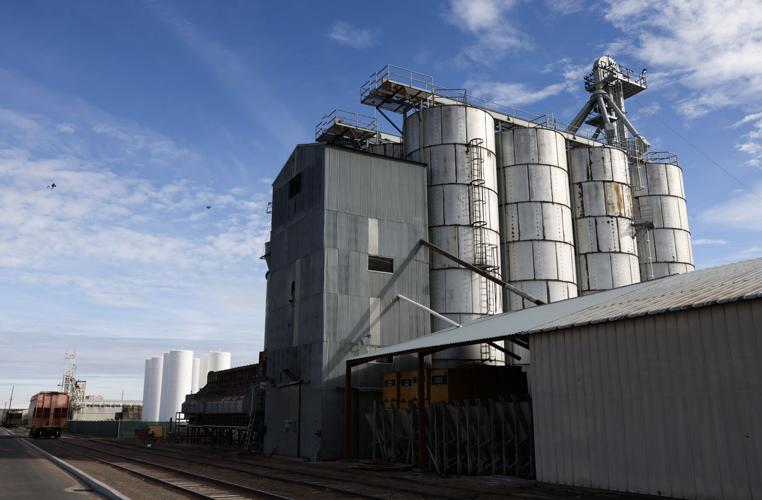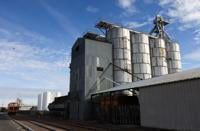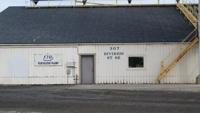In 1998, lead-contaminated carrots found in bags of frozen vegetables were traced back to a 70-acre farm in Quincy.
The lead levels weren’t high enough to prompt a recall nor were there any reported illness linked to the vegetables.
The Food and Drug Administration was conducting routine food safety tests when it discovered the contaminated carrots. But there were other concerns about agriculture and toxic metals brewing in the rural Central Washington city of Quincy.
That same year, Washington adopted standards regulating the amounts of heavy metals allowed in fertilizer.
Steel mills and other dirty industries were avoiding the hefty costs of disposing of their hazardous waste, such as lead, arsenic and cadmium, by recycling it into fertilizer.
Waste from those industries contains zinc, a metal beneficial to plants. But lead, arsenic and cadmium are not good for plants and can be harmful to people.
Farmers unknowingly used fertilizer that contained both plant nutrients and hazardous waste.
Few knew about the unregulated practice that was allowed until the matter was publicized in news reports.
Washington state adopted Canadian standards, which they said are rigorous. Three years later in 2001, the EPA adopted standards of its own but left regulation up to individual states.
Federal and state agencies say the standards are working well with few problems. But some environmentalists aren’t so sure and disagree with the use of any heavy metals in fertilizer.
Fertilizer companies in Quincy and one in Moxee fell under the spotlight after a Seattle Times investigation.
Cenex, Quincy Farm Chemicals and Bay Zinc in Moxee were highlighted in the Times news coverage. They remain in business under other names.
None responded to a Yakima Herald-Republic reporter’s inquiries about their businesses now or whether the standards led to any changes to their manufacturing practices.
A spokesperson for Cenex, now operating as CHS, directed inquiries about manufacturing practices and standards to the Fertilizer Institute, an industry association that was involved in setting standards in Washington. The association did not return phone calls and emails seeking comment.
Here is what’s now known about those companies based on news reports and their company websites:
Cenex
The global agribusiness netted $1.9 billion in fiscal year 2023. According to its website, the company produces more than 700 million bushels of grain, manufactures 2 million tons of fertilizer and supplies more than 300 million gallons of fuel annually. It employs about 10,000 people.
But the company, now operating as CHS, has had its problems. It agreed to a cleanup order under a 1998 consent decree with the state Department of Ecology over an equipment rinse pond it operated at its Quincy facility.
A state investigation found that material from the rinse pond Cenex had applied to a Quincy farmer’s cornfield as fertilizer decimated his crop and poisoned his land.
“The contents of the Cenex waste pond applied to Dennis DeYoung’s 100-acre circle had deleterious effects on plant growth,” the 16-page investigation report said.
Cenex operated the pond, 36 by 54 feet in diameter and 5 feet deep, from 1986 to 1990, when it emptied its contents onto Dennis DeYoung’s 100-acre cornfield.
With the land poisoned, DeYoung fell behind on his payments and the company that financed him foreclosed on a $100,000 debt. DeYoung owed Cenex too for seed and fertilizer.
Cenex then bought DeYoung’s land from the finance company.
DeYoung lost everything and was never compensated.
A Cenex worker told investigators the pond was used to rinse equipment used to spread fertilizer and pesticide. The worker also said leftover chemicals were dumped there, including 30 gallons of chemicals without labels he poured into the pond.
Cenex didn’t keep accurate application records of what it spread on DeYoung’s field, a violation of state law, the investigation said.
Company officials said Cenex applied the material at 300 gallons per acre, which would have totaled 30,000 gallons, the investigation said.
The pond, the investigation said, could hold 69,300 gallons.
Investigators found fertilizer elements in addition to several pesticides that were not EPA-approved for use on corn in soil at the site of the pond, the investigation said.
Cenex had the contents of the pond tested by a lab in Lincoln, Nebraska, and received the results before it was spread on DeYoung’s land, the investigation said.
CHS officials declined to comment on past events, but issued a general statement saying the company works to strengthen communities and that its core values include integrity and safety.
“We work to put the well-being of our people, customers and communities first,” the statement said.
Quincy Farm Chemicals
Across the street from CHS on Division Street East, Quincy Farm Chemicals is now McGregor Co.
Quincy Farm Chemicals was sued in Grant County Superior Court in 1997 by a farmer who said the company illegally adulterated and misbranded fertilizers and failed to disclose toxic metals they contained.
The farmer lost the case; a judge said while there were trace amounts of toxic metals in the fertilizer including arsenic, there was no scientific proof they caused any harm.
McGregor provides several agricultural services and products, from seed and fertilizer to agronomic consulting. The company also manufactures field equipment for fertilizer and chemical applications and has more than 30 retail locations in Oregon, Idaho and Washington.
Bay Zinc
Bay Zinc in Moxee was big retailer of toxic-waste-derived products when news broke about the practice in Quincy. The company sold more than 300 tons of lead, 41 tons of chromium and 9 tons of nickel between 1991 and 1995, according to a Seattle Times story.
At that time, Bay Zinc President Richard Camp said his products were safe and even met Canadian standards, the only nation with standards for heavy metals in fertilizer.
After standards were adopted in Washington, the company changed its manufacturing practices, according to a 2013 Yakima Herald-Republic story. The company, named Kronos Micronutrients at the time, said it began buying a byproduct from steel galvanizing that was about 70% zinc and the product was sent through a filtering process that removed lead and cadmium.
Now named Ultra Yield Micronutrients, the company had past struggles managing its waste.
In 2002, an inspection found a load of hazardous that should have gone to a landfill was dumped on the ground and contaminated groundwater was discovered. That led to a four-year cleanup that saw 13 tons of contaminated soil removed and cost the company $1.5 million.
And in 2012, the company had to clean up a hazardous waste spill that led to an EPA fine of $206,900.
The EPA found levels of cadmium and lead in soil above legal limits. The company said the spill was waste filtered out while manufacturing fertilizer.
Standards
When lead was found in carrots, the Washington Toxic Coalition — now named Toxic Free Future — told The Seattle Times the finding shows that what’s put on the ground can end up in food.
"This is a very clear lesson for Washington state agencies that if you put metals out there onto the fields, or other poisons, it's going to wind up in our food," coalition analyst Laurie Valeriano told The Times in a 1999 story. "This is very concerning."
Some environmentalists and health experts echo the same sentiment today.
Dr. Philip J. Landrigan is a pediatrician and epidemiologist. He’s also a faculty member of Mount Sinai School of Medicine in New York City.
He says heavy metals have no place in soil from which food is grown.
“I think it’s a concern to people who are exposed to it — farmers, families who live nearby and people who eat produce,” he said.
The EPA limits metals based on parts per million while the state bases its standards by pounds allowed per acre.
For example, the state allows 1.981 pounds of lead per acre compared to 7.329 pounds of zinc. Application rates are determined by the amounts of heavy metals in products, a system that mirrors Canadian standards.
Regulators say heavy metals occur naturally in soils and that the standards keep application rates at or below safe thresholds.
Canadian standards allow application of heavy metals at a rate that wouldn’t double background levels for 45 years. Background levels are the levels in which metals naturally occur.
Officials with the Canadian Food Inspection Agency say the 45-year timeline and levels were determined after several studies conducted by experts and that they undergo periodic reviews.
Landrigan says heavy metals such as lead naturally occur in soil in a way that people are not exposed to them.
“Most of these metals are locked up in rocks — most lead is bound up in lead ore, and only when mining are they exposed,” he said. “It’s natural but people are not generally exposed to it.”
Spreading metals on farmland is risky because they pose health risks, he said.
“Heavy metals are toxic — they damage cells,” Landrigan said. “Each one has a different symptom but they’re all toxic.”
Lead exposure, for example, can be especially harmful to children. It can cause nerve and brain damage, slow growth and development and other problems, according to the Centers for Disease Control and Prevention.
High levels of cadmium exposure can lead to kidney and heart disease. If inhaled, it can damage lungs and even cause death, according to the CDC.
• Editor's note: The Return to Quincy project is funded by TomKat Media, a film, television and media company founded by Tom Steyer and Kat Taylor to inspire creativity for the common good. Yakima Herald-Republic editors and reporters operate independently of our funders and maintain full editorial control over all project coverage.











(0) comments
Comments are now closed on this article.
Comments can only be made on article within the first 3 days of publication.